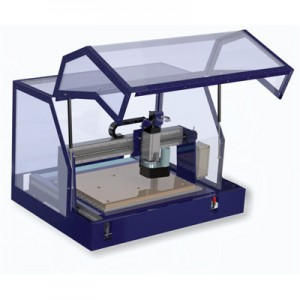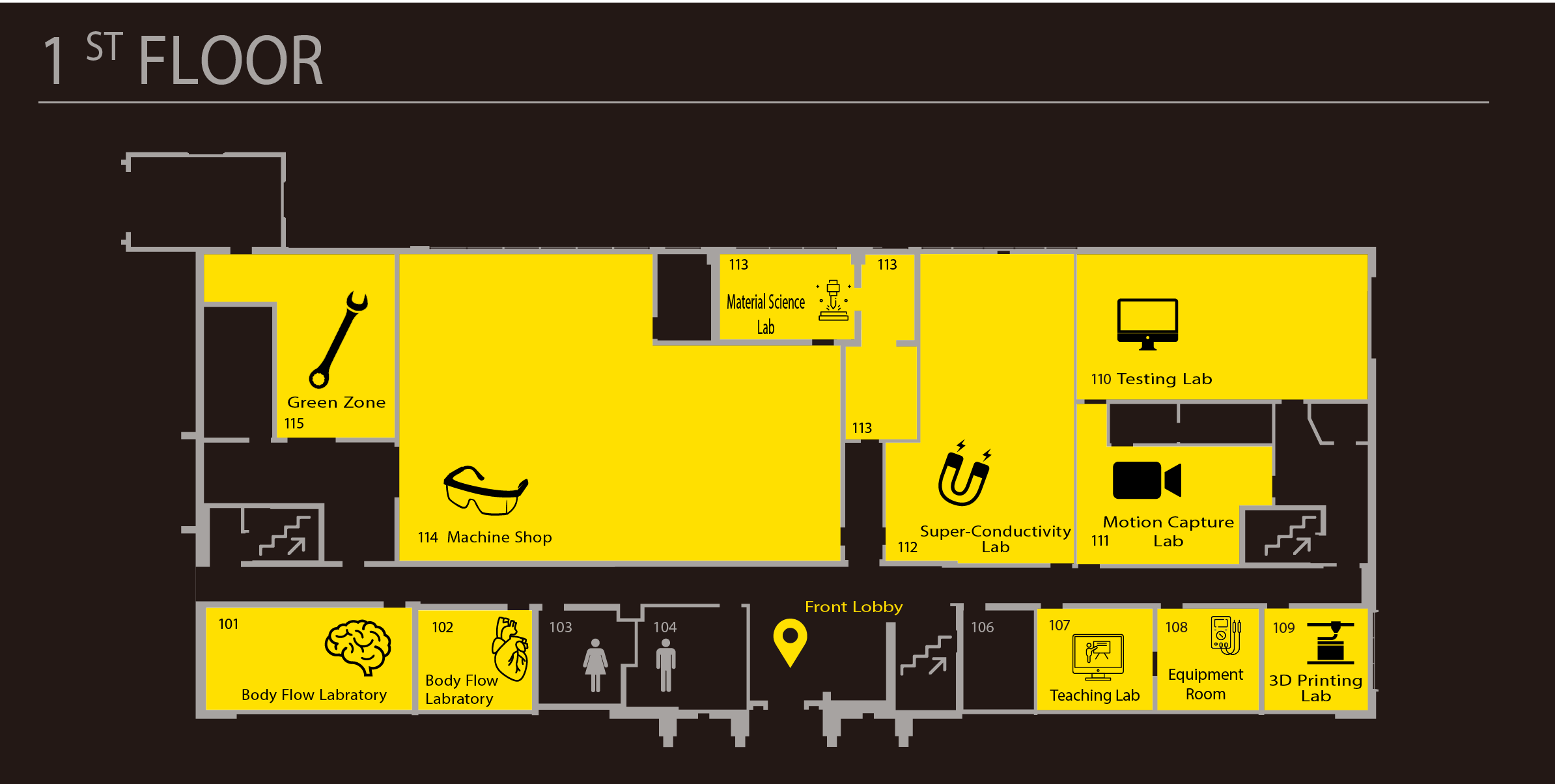CNC Router (ShopBot)
ShopBot
About the Tool: Subtractive manufacturing. Uses CNC (Computer Numeric Control) to remove material from a workpiece in a selected order.
Location: Project Build Space (Room 115)
Access: Mon-Fri 10am-6pm
File types:
2D file formats: .dxf, .dwg, .eps, .ai (adobe illustrator), .pdf
3D file formats: .stl, .dxf, .3ds, .obj, .skp, .v3m, .lwo, .3dm (Rhino 3D model)
Materials:
| Allowable Materials | Restricted Materials | |
| Wood | Solid wood Plywood MDF |
Pressure-treated wood Painted wood Stained wood Wood with knots, staples, nails |
| Wax | Machinable wax | |
| Plastic | HDPE Delrin |
All others |
| Foam | XPS foam (pink/blue extruded polystyrene insulation) Machinable foam (Urethane) |
|
| Metals | None | No metals allowed! |
Build size: 18” x 24”
Allowable Material Height
Material thickness depends on the size of the bit. Please note that smaller bits significantly increase mill time. It is recommended that the largest bit possible is used for each pass.
| Bit | Material Thickness |
|---|---|
| 1/2 Inch End Mill
1/2 Inch Ball Nose |
1.5 Inch |
| 1/4 Inch End Mill | 2.5 Inch |
| 1/4 Inch Ball Nose
1/8 Inch End Mill |
3 Inch |
| 1/8 Inch Ball Nose | 3.5 Inch |
Next Steps:
What is a CNC Router?
A Computer Numeric Control, or “CNC”, Router is a computer-operated milling machine. The ShopBot has three operational axes and can read 2D and 3D files. It can be used for many different projects that include, but are not limited to:
Milling
Making Molding
Furniture Design
How Does the ShopBot CNC Router Work?
The ShopBot CNC Router operates on 3 axes and has a drill bit that takes away material as it moves forwards, backwards, side to side, and up and down around the workspace. A computer software called VCarve Pro is used to control the path that the machine follows while cutting. Different toolpaths can be combined to achieve the best possible finished product. For example, a “roughing” toolpath can be used first to take out the majority of material and leave a rough shape of the final product. Then, a “finishing” tool path can be used to go back over the material to clean up the surfaces and add fine details.
Feeds and Speeds
Feed is the linear feed of the tool through the material
Speed is the rotational frequency of the spindle which turns the bit
The feeds and speeds are defined for each bit and material type within the toolpathing software. Feeds and speeds vary for each machine (relative to available spindle power), material type and the environment (temperature, humidity).
Pass Depth and Stepover
The Pass Depth and Stepover indicate how much the bit moves into the material between passes. Introducing too much material at once could cause the bit to break, while too little could create excessive milling time and reduce the life of the bits by dulling them.
Note: Bray’s Vcarve software has tool profiles with pre-assigned Feeds & Speeds, Pass Depths, and Stepovers for all available bits and materials.

More on Milling


